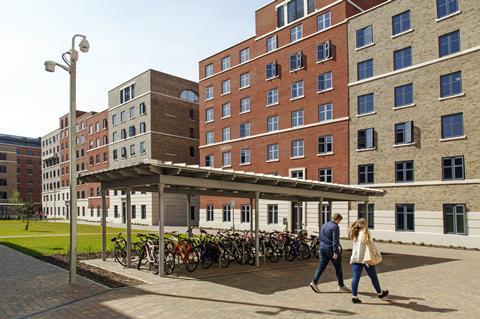Last year, to coincide with Property Week’s Student Accommodation Conference, we challenged developers and investors to question the status quo by looking to extend the lifecycle of their beds-for-rent portfolios – a theme that was picked up in the Future Living Report published by Investec earlier this year.

With the same conference upon us again, now is a good time to assess prospects for the sector for the next year. While 2019 started slowly, the announcement of several large portfolio deals in the past few months will see purpose-built student accommodation (PBSA) investment transaction volumes eclipse 2018’s £3.1bn worth of deals.
However, given that the projected £3.5bn is about half the investment peak of 2015, many might be wondering if the time to call the top of the UK’s PBSA market has arrived.
The lack of sites suitable for large-scale development represents a very real obstacle to growth in the UK, and this will continue in the short term, regardless of the election outcome and Brexit, if and when it happens.
To that end, we believe that the best opportunities will lie in the growth of consolidated investment portfolios comprising operational asset classes across the spectrum that service the needs of renters, from their university days all the way into retirement.
There is potential for rapid growth in the beds-for-rent segments in the UK, driven by increased institutional activity, rising investment volumes and underlying demographic changes. All this will in turn pave the way for a more uniform investor approach to the ‘living’ category. According to our research, investors believe residential rental yields will coalesce within the next five years. We believe this will present strong opportunities for those brave enough to grab them.
The experiences that can be shared between operational asset classes are endless. There is a lot the emerging co-living assets can learn from the PBSA sector – and equally we expect to see the offering provided by student operators being influenced more and more by the hospitality sector. So as investors chase scale for operational efficiencies, we think there is merit in looking across the rental sectors with a view to consolidation and achieving those all-important synergies.
The extent of this convergence rests on identifying a strategy that plays to the strengths of each individual asset class – and finding the ‘perfect blend’ between the search for yield compression and stable, cash-generative assets.
The flight to quality is something we are hearing a lot in the market at the moment. The number of higher-spec products seems to be increasing and competition to fund prime assets and sponsors is fierce. However, a key consideration for developers and investors remains delivering value for money, whether in maturing PBSA or nascent co-living.
Lenders in the space will need to be all the more vigilant in assessing PBSA deals by looking more closely at micro-locations, university rankings, investment plans and operator credentials. As supply and demand reach break-even in some cities, now more than ever is the time to back the best sponsors in the best locations.
As the 2010s end, we expect to see growing convergence in the ‘living’ sector, with large and expert organisations growing in the same way as the offices, retail and industrial worlds have seen broad-ranging expert owners for a number of years.
As those expert groups grow, so the service they will provide will also improve, to the extent that in this consumer-led market some organisations will become well-known brands widely recognised by the public. At Investec Structured Property Finance, we look forward to supporting this asset class throughout the 2020s.
Erin Clarke and Shivani Goolab, Investec Structured Property Finance






























No comments yet